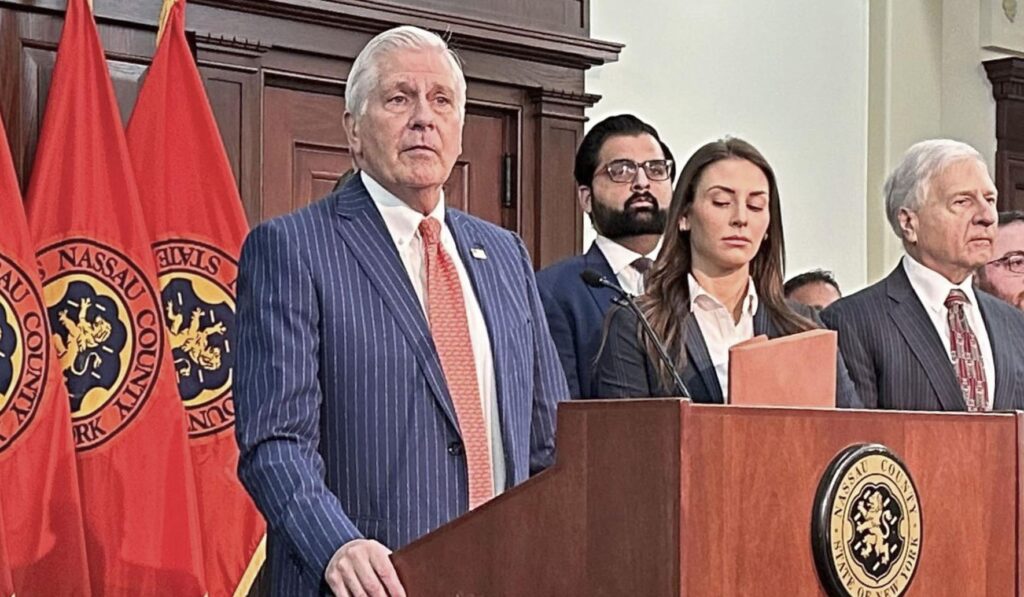Nassau County Executive Bruce Blakeman has vowed to bolster law enforcement and deepen cooperation with U.S. Immigration and Customs Enforcement in his Long Island community if Zohran Mamdani wins the contested race mentioned in early reports. The promise frames public safety and immigration enforcement as top priorities for local leaders facing shifts in political power. This article looks at what Blakeman proposed, why he says it matters to residents, and how these moves fit into the broader debate over crime and community control.
Blakeman’s pledge to hire more police officers underscores a basic Republican argument: public safety requires resources and clear priorities. He tied that commitment to a potential political outcome, saying he would take specific steps “if Zohran Mamdani wins” the contested position referenced in coverage. For voters worried about crime or enforcement, promises to expand patrols and boost staffing are straightforward and measurable.
On ICE collaboration, Blakeman emphasized tighter coordination with federal immigration authorities as a complement to local policing. Republicans often argue that when local and federal agencies work together, communities see clearer enforcement of immigration laws and quicker action on individuals who pose safety concerns. That position appeals to residents who want consistent application of federal statutes alongside local crime-fighting efforts.
Hiring more officers is a tangible response, but it comes with operational choices about where and how to deploy those resources. Blakeman’s approach signals a focus on frontline enforcement—visible patrols, quicker response times, and more presence in areas that report higher incidents. From a Republican viewpoint, those are the kinds of pragmatic steps that restore order and reassure citizens, without waiting on long policy debates.
The pledge also raises questions about balancing civil liberties and enforcement priorities when local governments lean into federal partnerships. Republican officials tend to argue the balance skews appropriately toward public safety when there’s demonstrable risk, and they stress law enforcement’s role in protecting vulnerable residents. Still, the mechanics of coordination—data sharing, custody transfers, and legal safeguards—require careful management to avoid overreach.
Political optics matter as much as policy details in this kind of pledge. Blakeman framed his commitment as a preemptive move against what he casts as risky or permissive approaches championed by some opponents. Republicans see this as a contrast in leadership styles: one side promising law-and-order initiatives, the other pushing reforms that critics say can leave gaps in enforcement and accountability.
There are practical hurdles, including budget constraints and personnel pipelines, that any pledge to hire more officers must overcome. Recruiting, training, and retaining qualified officers takes time and money, and county executives must balance competing demands on limited budgets. Still, from the party’s perspective, finding funds for public safety is a priority that many communities will accept as necessary spending.
Another element is community trust. Expanding cooperation with ICE can be controversial and may affect residents’ willingness to report crimes or engage with police. Republicans argue that transparent, consistent enforcement paired with community outreach can mitigate those concerns and protect both public safety and residents’ rights. Effective communication about the goals and safeguards of such programs is essential.
Blakeman’s stance also feeds into a larger conversation about local autonomy versus federal authority. By publicly committing to enhanced ICE collaboration, he’s signaling that local leadership can choose to align with federal priorities on immigration enforcement. For Republican voters who favor stronger borders and more robust enforcement, that alignment is a clear policy win and a marker of administrative resolve.
Looking ahead, implementing these promises will involve policy choices that test priorities, budgets, and community relations. The practical steps—staffing plans, memorandums of understanding with federal agencies, and oversight measures—will determine whether the pledge translates into real changes on the ground. For now, the pledge stands as a direct response to political shifts and an assertion that public safety and immigration enforcement will remain central to Nassau County’s agenda if the conditions he described come to pass.



